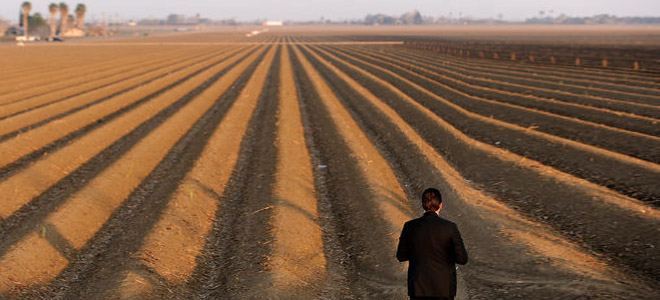 Roger Pielke, Jr. was highlighted in a New York Times blog on climate variability and drought.
Roger Pielke, Jr. was highlighted in a New York Times blog on climate variability and drought.
A Climate Analyst Clarifies the Science Behind California’s Water Woes
by Andrew C. Revkin
March 6, 2014
Excerpt: There’s no question that residents of California and much of the West face a collision between high water demands driven by growth and outdated policies and a limited and highly variable water supply.
But that reality hasn’t stopped heated arguments from springing up in recent days over the cause or causes of California’s continuing epic drought. Is one of the drivers the growing human influence on the climate? Or is this drought something we’ve seen before, the result of natural variability?
In the wake of an unusual public debate on this issue between President Obama’s science adviser, John Holdren, and Roger Pielke, Jr., a longtime analyst of climate-related disaster losses at the University of Colorado, I received a helpful note from Martin Hoerling, who studies climate extremes for the National Oceanic and Atmospheric Administration.
Hoerling’s conclusions echo those of another longtime student of western drought, Richard Seager of Columbia University, as reported in Justin Gillis’s recent news report on the issue. “I’m pretty sure the severity of this thing is due to natural variability,” Seager told Gillis.
Here’s Hoerling’s note:
The California drought and its relation to climate change seems to be an issue deserving more discussion. You may have read some of the exchange between Roger Pielke, Jr., and John Holdren regarding the issue of the California drought, and the possible role of climate change. You may have also have read the Joe Romm post [on Climate Progress].
To say that there is interest to know if the California drought is appreciably related to human induced climate change is an understatement just from reading these rather acidic exchanges.
It is surprising to me when the government’s chief scientist feels compelled to respond…to the remarks of a single university professor, Roger Pielke, Jr., on that subject [as cited by a Senate subcommittee].
Andy, Ive been engaged in understanding this drought event, having just returned from Sacramento where I briefed a group of water managers and emergency responders on the drought. [The event: “California Drought Outlook Forum: What’s Ahead and What We Can Do.”]
This drought has many of the attributes of past historical droughts over the region — widespread lack of storms and rainfall that would normally enter the region from the Pacific with considerable frequency. It resembles the 1975-76 and 1976-77 California droughts, when two consecutive years were at least as dry as the last two years have been for the state as a whole.
The bottom line is that this type of drought has been observed before. And, to state the obvious, this drought has occurred principally due to a lack of rains, not principally due to warmer temperatures.
This may seem pretty obvious (and trivial) from simple inspection of historical observations, and indeed this drought is quite familiar to anyone who lived in California during the mid-1970s, as I did.
But the obligations for water have greatly increased in the state, and it may very well be that the stress created by the current failed rains is more severe than for similar rainfall deficits 40 years earlier. Without making a strong claim, it is at least intuitive that sociological and economic changes in California could be reducing resiliency to natural hazards, like drought. Such points have been made in many contexts regarding natural hazards and changes in human society — quite clearly and defensibly by Roger Pielke, Jr. — and this California situation may be in that same spirit.

